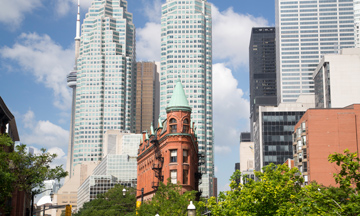 Claudia Ceribelli – Italy Sotheby’s International Realty
Claudia Ceribelli – Italy Sotheby’s International Realty
Castles are often listed as national treasures, historic sites, or cultural monuments. But occasionally—every once upon a time—they’re listed as properties for purchase.
When a listing appears, it presents buyers with an opportunity to experience castle living in a home steeped in lore and legend. Of course, one of the reasons why privately or publicly held luxury castles come up for sale is because they can be expensive in their updates and upkeep.
Depending on their origins and prior use, castles may require repairs, plumbing, and electricity, and maintenance can be costly. You might want to renovate an old medieval floorpan to create separate rooms, or widen some of those notoriously narrow fortress windows—but if the castle has protected status you’ll need special permissions, along with potentially having to source highly specific materials.
 Hugo Dos Santos – Cardis Immobilier Sotheby’s International Realty
Hugo Dos Santos – Cardis Immobilier Sotheby’s International Realty
As a result, real estate experts advise that not just anyone should purchase a castle, especially if it’s in need of renovations; they purposefully seek buyers who have the patience, passion, and finances to make the fairytale a reality. But if you are such a buyer, these truly are unique homes fit for royalty.
Desirable Global Locales are a Gateway to Travel
 Côte d’Azur Sotheby’s International Realty
Côte d’Azur Sotheby’s International Realty
It’s no coincidence that some of the world’s most storied buildings would be situated in some of the world’s most storied lands. Castles, after all, are relics of the bygone monarchies, nobilities, and aristocracies whose conspiracies, conflicts, and conquests are retold today in media and museums. Own one, and you’ll be a short plane, train, or ferry ride from many other historical wonders.
With that in mind, the British Isles—which includes England, Scotland, Ireland, and Wales—are excellent places to prospect for a castle. So too is continental Europe; the picturesque European castles of the north and west coast of France, in regions such as Normandy and Pays de la Loire, are highly sought after. Belgium, the Netherlands, and Germany all have castles that look like they come straight out of a storybook.
 Luca D’Angelo – Italy Sotheby’s International Realty
Luca D’Angelo – Italy Sotheby’s International Realty
In the north, castles in countries such as Sweden tend to be more palatial and baroque. In the south, the French Riviera, Spain, and Italy are famous for their variety of ancient, beautifully preserved castles, many of which are surrounded by fruitful orchards and sunny vineyards.
Architectural Artifacts Spanning Ages and Styles
For connoisseurs of culture, castles offer a sort of aesthetic time travel. Many Swedish castles weren’t just built within the last three centuries, but rebuilt—meaning new structures or sections were raised on the revitalized ruins of fortresses dating from medieval times. This isn’t abnormal for castles; because they have stood tall and strong for so long, many accumulated additions or alterations in a range of architectural styles, making them a compelling composites and assemblages.
Some may be primarily medieval or renaissance, gothic or romanesque—but castle interiors or exteriors might have secondary traits that make them even more intriguing.
 Davide Marra – Cardis Immobilier Sotheby’s International Realty
Davide Marra – Cardis Immobilier Sotheby’s International Realty
This amalgamated character is ultimately what makes castles so conducive to restoration and renovation. As long as you can secure the necessary authorizations from administrators, adding new features, amenities, and qualities to create a futuristic castle won’t compromise its authenticity; rather, it will contribute to a long tradition of furnishing and fashioning these homes to thrive with the times.
Investing in a Premier Destination Pays Dividends
While not all buyers will have the means and motivation to purchase a castle permanently, there are many who would love to dwell in one temporarily. This makes them attractive real estate investment properties; they can be rented out to luxury vacationers willing to spend on a lavish holiday, or operated as high-end experiential hotels due to their capacity to house numerous visitors at once.
 Hugo Dos Santos – Cardis Immobilier Sotheby’s International Realty
Hugo Dos Santos – Cardis Immobilier Sotheby’s International Realty
But more than a financial investment, owning historical properties like castles are investments in posterity. You become the steward of a landmark and its legacy, which is a privilege even the world’s most affluent individuals may never afford, and you also have a property that will endure for decades and centuries to come, building generational wealth for your progeny.
Few Properties Have So Much Privacy and Space
 Côte d’Azur Sotheby’s International Realty
Côte d’Azur Sotheby’s International Realty
The castles of yesteryear were often built for strategic, practical purposes. In more violent times, they may have been erected atop high elevations to grant panoramic views of the countryside, or laid their foundations on promontories to be bounded on three sides by water. In times of peace, these historic estates would have provided safe and exclusive escapes for society’s elite, with extensive grounds and extravagant gardens.
For these reasons, that land that surrounds modern castles is almost as scenic and covetable as the castles themselves. Luxury real estate buyers frequently seek primary or secondary residences that will serve as a comfortable and secluded retreat, echoing the motives of past nobles and royals.
Should you aspire to acquire a castle, work with a local luxury real estate expert to ensure no details are missed with respect to its refurbishment. And when all is said and done, owning one—with all its heritage and mystique, symbolism and splendor—is an honor no other dream home could provide.


